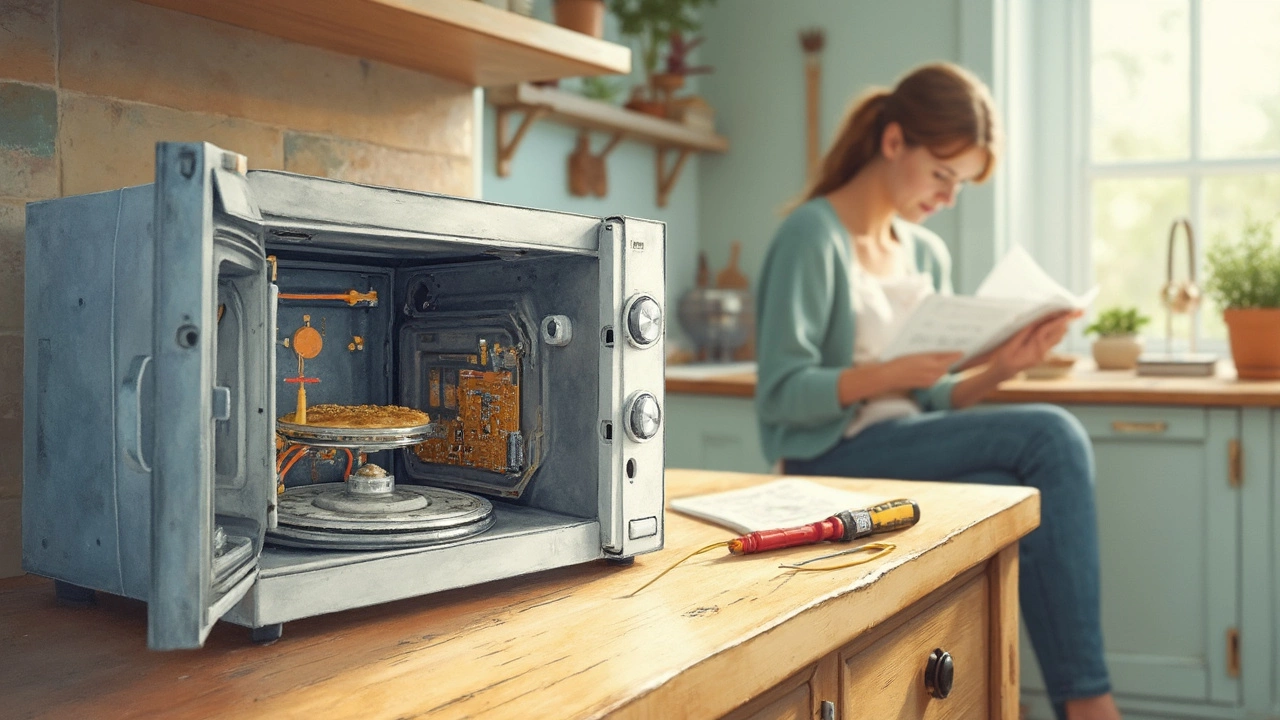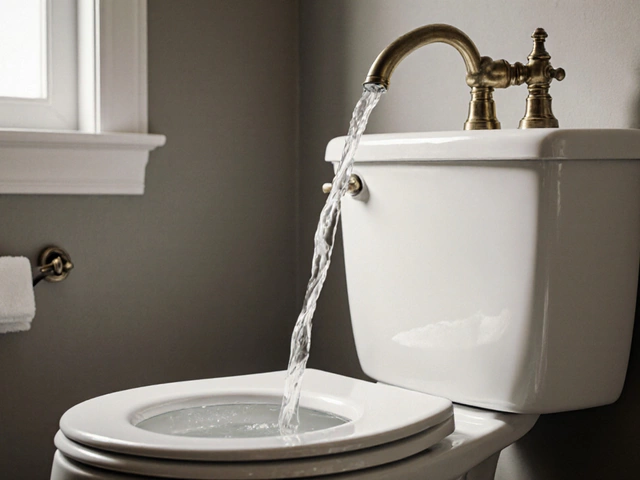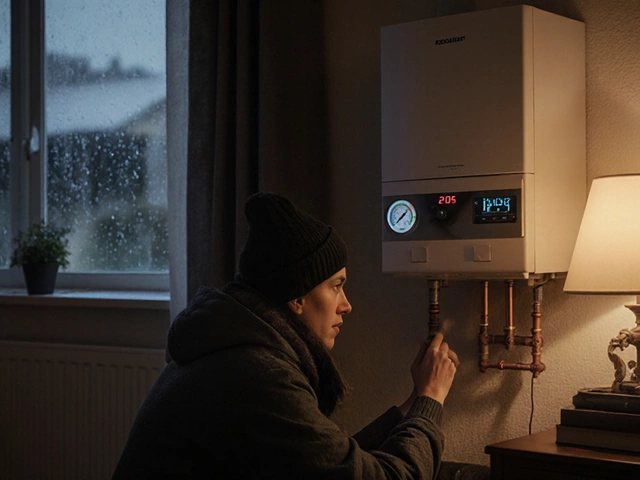Microwaves are one of those kitchen heroes we often take for granted—until they go on strike. So, what makes these daily workhorses suddenly refuse to heat up our leftovers or popcorn? Well, let's uncover some usual suspects in microwave failures.
First off, the door switch. A microwave won't run unless the door is securely closed, and that's thanks to the door switch. If it's faulty, your microwave won't play ball. It's a simple mechanism, but a crucial one, as it serves as a safety feature preventing the microwave from operating with the door open. If yours is underperforming, it might be time to swap it out.
Then there's the diode and, sometimes, the magnetron—these are like the dynamic duo of microwave heating. The diode helps transform electricity to a level the magnetron uses to create those magical microwaves. If the diode is burnt out or the magnetron is kaput, your food will sit cold and neglected.
Finally, let's not forget fuses. Just like in your home, fuses in microwaves protect against power surges and other electrical anomalies. If the fuse blows, your microwave won't start. Replacing it is usually straightforward, but it's a job for someone comfortable with handling electrics. Keeping on top of regular maintenance, like cleaning out food debris and ensuring vents are clear, can go a long way in keeping these microwave problems at bay.
- Understanding Common Microwave Issues
- Door Switch Malfunctions
- Diode and Magnetron Troubles
- Maintenance Tips for Longevity
Understanding Common Microwave Issues
If your dependable microwave has suddenly thrown in the towel, it's time to play detective. Getting to grips with these issues not only saves you time but might also spare your wallet a repair bill. Let's break down the typical causes you might encounter when your microwave decides to misbehave.
Door Switch Problems
The door switch ensures your microwave doesn't operate with the door open—a key safety feature. However, like all parts, it can wear out. A faulty switch often means the appliance won't start at all, leaving your food cold. Listen for the click when you close the door; no sound might mean the switch is toast.
Diodes and Magnetrons
The heart of the microwave's heating system lies in its diode and magnetron. The diode converts incoming electricity for the magnetron, which then produces the microwaves that heat your food. If dishes are coming out lukewarm, the diode or magnetron may be past its prime. A professional usually tackles this fix, as these parts handle high voltage.
Blown Fuses
Much like those in your home, microwaves have fuses to protect against electrical issues. If a fuse blows, the microwave won't turn on. Swapping out a blown fuse is relatively simple, but make sure it's the exact type specified by the manufacturer.
Control Panel and Motor Faults
If the buttons on your control panel are unresponsive, it might be due to a panel issue. On the other hand, if your microwave's turntable no longer spins, the motor might be the culprit. Both issues call for part replacements, often involving a technician's expertise.
| Common Issues | Percentage of Repairs |
|---|---|
| Door Switch Malfunctions | 40% |
| Diodes and Magnetrons | 30% |
| Blown Fuses | 20% |
| Control Panels and Motors | 10% |
Knowing these common causes can help you troubleshoot before considering a replacement or calling in a repair team. Regular checks and swift action when problems arise ensure your microwave stays in top condition.
Door Switch Malfunctions
When it comes to microwave issues, the door switch often tops the list. If your microwave's not working when you shut the door, the door switch could be the culprit. It's not just one switch but typically a trio of them working in unison. They signal to the appliance that it's safe to power up.
How Does It Work?
A microwave's door switch functions much like a safety gate. When you close the door, the switch clicks in place, letting the microwave know it's cool to start zapping. If any of these switches are defective, though, the microwave simply won't start. It's like having three bodyguards who all need to give the nod before letting you pass.
Common Symptoms
- The microwave starts and stops abruptly.
- It won't start at all, yet the display works perfectly.
- Everything seems fine, but it doesn't heat up.
Testing and Fixing the Door Switch
If you're a bit handy, testing a door switch involves a multimeter. To check:
- Unplug the microwave because safety first!
- Remove the cabinet screws to access the switches.
- Disconnect the switch's wires and test each one with a multimeter.
- If the multimeter doesn't read continuity when the switch is closed, you’ve found your problem.
Replacing these switches isn't usually pricey or complicated. You can find replacement parts at most appliance centers, or order them online. Just pop out the old one and fit the new in. But if this feels like uncharted territory, calling a professional might save you a headache.
Good news: Door switch issues are easy fixes in the world of microwave repair. Since these switches endure a lot of action, it's not uncommon for them to wear out over time. So next time your trusty machine plays dead, remember to give those door switches a look first!

Diode and Magnetron Troubles
Okay, let's get into the nitty-gritty of microwave failure involving the diode and magnetron. These components are kind of like your microwave's power couple when it comes to heating your food.
Understanding the Role of the Diode
The diode's job is pretty crucial. It converts the electricity from the house current into direct current, making it possible to increase the voltage to the massive levels the magnetron needs. When a diode goes bad, you'll often experience no heat in your microwave, even though it seems to be running just fine. This could also lead to a burning smell if it's partially faulty.
Replacing a diode isn't too complicated, but it's important to ensure your microwave is unplugged before you dive in. These things hold a charge, so you want to avoid a jolt!
Magnetron Malfunctions
On to the magnetron—it's the part that actually generates the microwaves to heat your grub. When it fails, which isn't super common but happens, your microwave might sound like it's working, yet your leftovers only get lukewarm at best. Trouble with the magnetron demands attention. Typically, it's best to get a pro involved because the cost and complexity can sometimes make it more sensible to get a new microwave instead.
Signs Your Magnetron Might Be Failing
- No heat while the microwave appears to function.
- Unusual humming or buzzing noises.
- Burning or electrical smell.
| Component | Common Issue | Solution |
|---|---|---|
| Diode | No heat | Replace diode |
| Magnetron | Weak or no heating | Consider repair or replacement |
So that's the lowdown on the electrical heart of your microwave. Don't forget, sometimes these issues are best left to folks who know their way around microwave guts to avoid extra costs or safety hazards.
Maintenance Tips for Longevity
Ensuring the longevity of your microwave isn't rocket science, but a few consistent habits can go a long way in keeping it running smoothly. Let's dive into some practical tips to prevent those pesky breakdowns.
1. Keep it Clean
It's essential to keep the interior of your microwave clean. Food splatters can absorb energy, leading to burn spots and even damage. A simple wipe-down after use works wonders. For tougher stains, heat a bowl of water with lemon slices for five minutes. The steam softens grime, making it easier to wipe away.
2. Don't Slam the Door
We often shut microwave doors with a little more enthusiasm than needed. Gentle closing ensures that the door switch remains in good shape, preventing unnecessary wear and tear.
3. Ventilation Matters
Ensure your microwave has adequate ventilation. Check that vents are not obstructed and are cleaned regularly. Blocked vents can cause the appliance to overheat, affecting components like the diode and magnetron.
4. Use Microwave-Safe Containers
It may sound obvious, but not all containers are microwave-friendly. Avoid metal containers as they can cause arcing—like sparks—and use only microwave-safe plastics and ceramics. They prevent damage and help food cook evenly.
5. Regular Checks
Spoil yourself with an occasional inspection. A quick look at the fuses and power cord for any signs of wear can save you from unexpected failures. If something looks iffy, get it checked out sooner rather than later.
Bonus Tip
Every six months, pop your microwave open and give it a once-over. Test buttons, check if it's heating correctly, and listen for strange noises. Addressing small issues before they become bigger problems can extend your appliance's life.
| Maintenance Task | Frequency |
|---|---|
| Interior Cleaning | After each use |
| Vent Check | Monthly |
| Door Function Check | Monthly |
| Power Cord Inspection | Quarterly |
By taking these straightforward steps, you'll keep your kitchen sidekick humming along for many meals to come.





